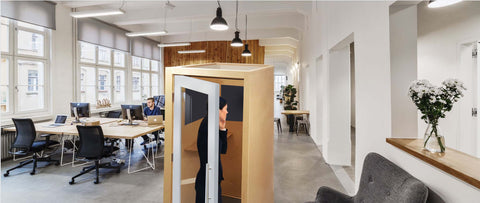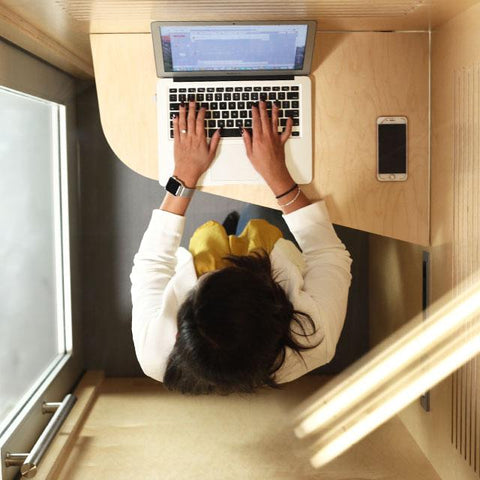In today's fast-paced work environment, distractions in the workplace are inevitable. From constant email notifications to noisy coworkers, there are a plethora of things that can hinder productivity and focus. In this blog post, we will explore the 10 most common distractions in the workplace and provide tips on how to tackle them effectively.

Email and Messaging Apps
Navigating the constant influx of emails and messages is a significant challenge in maintaining workplace concentration. These interruptions, while seemingly minor, can cumulatively have a substantial impact on your ability to remain immersed in your work. An effective strategy to mitigate this issue is to allocate specific periods during your day solely for managing these communications. This approach not only limits disruptions but also allows for more focused and efficient handling of your inbox and messaging platforms. Additionally, turning off real-time notifications or employing the use of tools that batch notifications for viewing at predetermined times can further safeguard your concentration, ensuring that you maintain a steady workflow without the constant barrage of digital interruptions.
Social Media Temptations
Social media platforms are notorious for diverting attention away from work-related tasks, creating a significant hurdle in maintaining productivity. To effectively manage this distraction, employing tools that restrict access to these platforms during work hours can be highly beneficial. Setting clear boundaries for social media use while on the clock ensures that you remain focused on your tasks. Establishing specific times dedicated to checking social media, such as during lunch breaks or designated rest periods, allows you to enjoy these platforms without compromising your work output. This method not only aids in curbing the temptation to constantly check for updates but also instills a routine that can enhance overall productivity by clearly segregating work time from leisure time.
Office Noise and Chatter
Office environments, especially those with open floor plans, often struggle with noise levels and casual conversations that can break concentration. To counteract this common distraction, creating a workspace that includes noise-cancellation tools is highly beneficial. Employing noise-canceling headphones is a practical approach for individuals needing to immerse themselves in their tasks without the background distractions of office chatter and activity. For a more communal solution, establishing quiet zones within the office can provide a shared space for employees seeking a silent area to focus on demanding projects. These strategies, when combined with a culture that respects quiet workspaces, can significantly mitigate the disruptive effects of office noise and chatter, allowing employees to maintain higher levels of concentration and productivity throughout the workday.

Unscheduled Meetings and Drop-ins
Unscheduled meetings and unexpected drop-ins are among the leading culprits for derailing a day's planned activities, slicing through focus and upending productivity. Addressing this requires clear communication and setting firm boundaries with peers. Indicating your availability for impromptu discussions through shared calendars or visual signals, such as a status indicator on your desk or office door, can significantly reduce interruptions. Implementing a system where meetings must be scheduled in advance, preferably through a centralized digital platform, can ensure that both you and your colleagues have dedicated times for collaborative sessions without compromising individual work flows. Additionally, fostering an office culture that respects these boundaries is crucial; encouraging respect for each other's time not only minimizes disruptions but also promotes a more organized, productive work environment. Opting for scheduled check-ins or stand-up meetings at predetermined times can offer structured opportunities for collaboration, ensuring that the need for unscheduled drop-ins is minimized.
Multitasking Mayhem
Multitasking is a common practice in the modern workplace, with many assuming it boosts efficiency. However, research suggests that dividing attention across multiple tasks can significantly impair productivity and the quality of work produced. The human brain is not wired to focus on more than one task at a time with full efficiency, leading to a scattered approach that can extend the time required to complete tasks and increase the likelihood of errors. To navigate this pitfall, adopting a single-tasking mindset is advisable. Prioritizing tasks based on urgency and importance, and dedicating set blocks of time to focus on each task individually, allows for deeper concentration and more meaningful progress. Techniques such as the Pomodoro Technique, which involves focused work intervals followed by short breaks, can be particularly effective in enhancing focus and reducing the allure of multitasking. By embracing a more linear approach to tackling tasks, individuals can improve their productivity levels and produce higher quality work, free from the chaos of multitasking mayhem.
Cluttered Workspace, Cluttered Mind
A cluttered workspace not only hinders your ability to find necessary tools and documents swiftly but also significantly impacts your mental clarity and productivity. The visual chaos of an unorganized desk can overwhelm the mind, leading to increased stress and a decreased capacity to concentrate on the tasks at hand. Taking the time to declutter and organize your working area is crucial. Start by removing any unnecessary items and organizing what remains into a system that works for you. Utilize organizational tools such as drawer dividers, shelf organizers, and digital document management systems to keep everything in its place. Regularly dedicating a few minutes at the end of each day to tidy up can help maintain this orderliness. Creating a workspace that is free of clutter not only streamlines your work process but also fosters a sense of calm and focus, enabling you to tackle your tasks more efficiently.
Digital Distractions
Navigating the maze of digital distractions requires a strategic approach to maintain productivity in the modern workplace. Beyond the typical culprits of email and social media, a vast array of websites and online activities, including news portals, video streaming, and online shopping, can easily divert attention from work tasks. Implementing website blockers or productivity apps during office hours is a practical solution for keeping these distractions at bay. These tools can be customized to limit access to specific sites known to disrupt focus, ensuring that digital engagement is purposeful and aligned with work objectives. Designating time slots for browsing or engaging in non-work-related online activities during breaks can also help in drawing a clear line between work and leisure, allowing employees to recharge without compromising their work responsibilities. By actively managing and limiting exposure to digital distractions, individuals can significantly enhance their ability to concentrate and achieve their professional goals.
Personal Concerns and Daydreaming
Managing personal concerns and daydreaming during work hours demands mindfulness and deliberate strategies. It's crucial to recognize when your thoughts wander off to personal matters or future plans, as this awareness is the first step towards refocusing on the task at hand. Implementing brief, scheduled breaks can offer a structured time to ponder over personal issues or indulge in brief daydreaming, thus containing these distractions to specific intervals. During these breaks, stepping away from your workspace and engaging in a short walk or meditation can facilitate mental clarity and refresh your focus. Additionally, jotting down pressing thoughts or future plans in a notebook can help temporarily set aside these distractions, ensuring they're acknowledged but not allowed to hamper productivity. By intentionally managing and compartmentalizing the time spent on personal concerns and daydreaming, you can maintain a balanced focus on work objectives while also addressing personal needs in a structured manner.
Physical Discomfort and Poor Ergonomics
Physical discomfort and suboptimal ergonomics are significant yet often overlooked distractions that can impede workplace productivity. Continuous discomfort from inadequate seating or poorly arranged workstations forces frequent adjustments and breaks, breaking the flow of concentration. To mitigate this, assessing and adjusting your workspace for optimal ergonomics is crucial. Ensure your monitor is at eye level and that your chair supports your spine's natural curve. Accessories like adjustable desks or footrests can further personalize your space for comfort. Additionally, incorporating short, regular stretching or movement breaks helps alleviate potential strain from prolonged sitting, maintaining both physical well-being and focus throughout the day. Investing in ergonomic tools and adopting these practices not only reduces physical distractions but also enhances overall work performance.
Lack of Clear Goals and Priorities
Navigating the workday without a roadmap leads to inevitable detours and distractions. The absence of well-defined objectives results in aimless task handling and inefficiencies. Establishing precise, attainable goals is foundational to maintaining focus and driving productivity forward. Begin by breaking down large objectives into smaller, manageable tasks that can be tackled daily or weekly. This not only provides a clear path forward but also instills a sense of accomplishment as each milestone is achieved. Regular check-ins with oneself or with a team can help adjust these goals as necessary, ensuring alignment with overarching project outcomes or company objectives. Tools such as digital task managers or traditional planners can aid in tracking progress and setting priorities, offering a visual representation of what needs to be done and by when. Prioritizing tasks based on their urgency and impact allows for more strategic allocation of time and resources, minimizing the risk of being sidetracked by less critical activities. This methodical approach to goal setting and prioritization effectively curtails distractions, paving the way for heightened concentration and success in the workplace.
Learn About Zenbooth Office Booths and Pods
Zenbooth's office booths and pods are meticulously designed to cater to the needs of employees seeking solitude for deep focus or confidential communications. These private enclosures are equipped with soundproofing features, ensuring that external office noise and chatter do not disrupt your workflow. Furthermore, the ergonomic design of Zenbooth products promotes comfort and well-being, allowing users to engage in prolonged periods of focused work without the adverse effects of physical discomfort. Whether it's for taking important phone calls, diving deep into project work, or simply finding a moment of peace away from the open office's distractions, Zenbooth provides an ideal environment that supports concentration and efficiency. By integrating Zenbooth booths and pods into your workspace, businesses can significantly enhance the overall productivity and satisfaction of their teams, creating a more focused, serene, and efficient workplace.